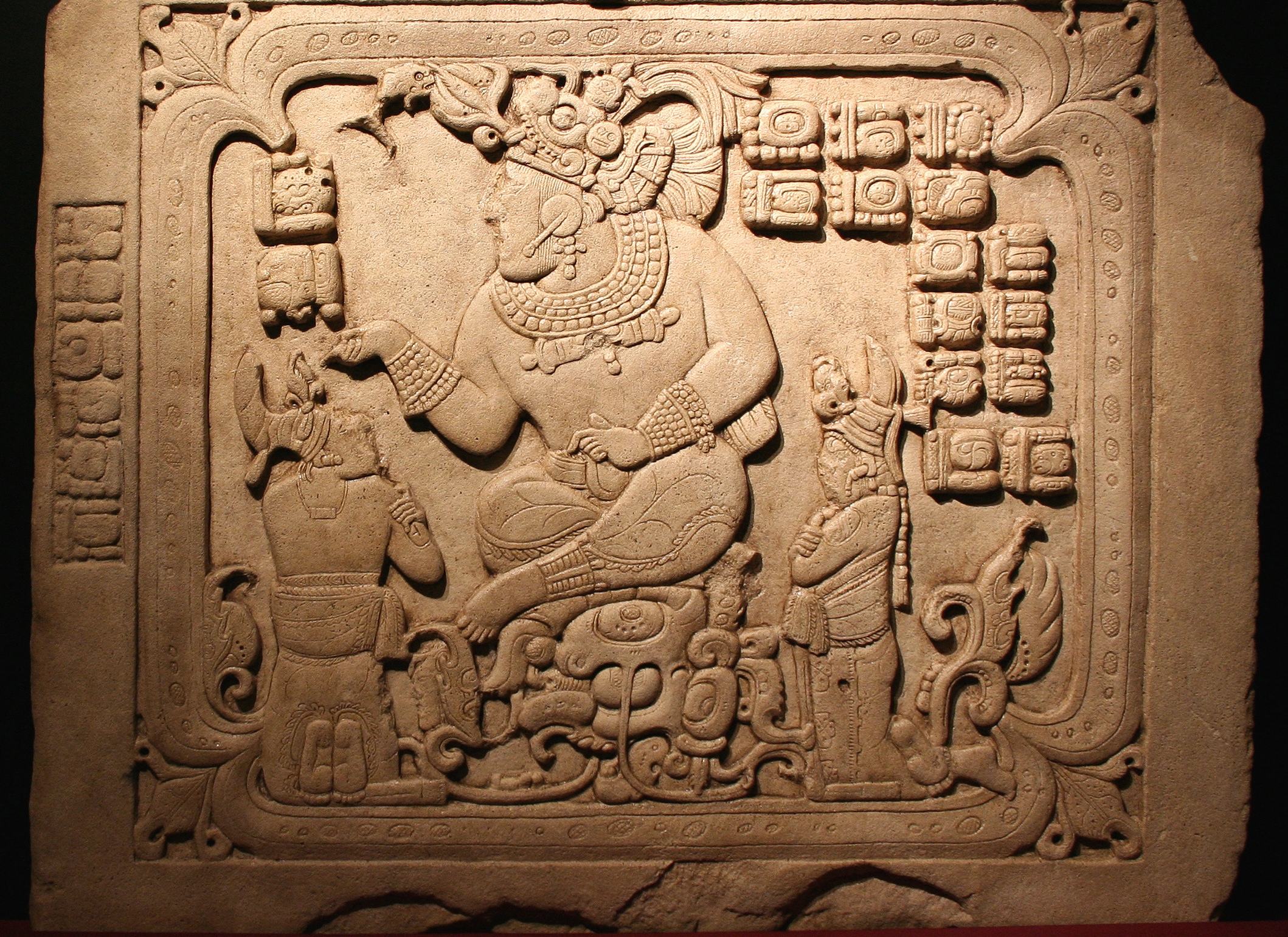Cancuén on:
[Wikipedia]
[Google]
[Amazon]
 Cancuén is an
Cancuén is an
Visit CancuenMaya Palace Uncovered
* ttps://web.archive.org/web/20071013132547/http://www.authenticmaya.com/cancuen1.htm Photo Gallery and Site description {{DEFAULTSORT:Cancuen 770s establishments 800 disestablishments 8th-century establishments in the Maya civilization 8th-century disestablishments in the Maya civilization Populated places disestablished in the 8th century 1905 archaeological discoveries Maya sites in Petén Department Archaeological sites in Guatemala Former populated places in Guatemala Classic period in Mesoamerica
 Cancuén is an
Cancuén is an archaeological site
An archaeological site is a place (or group of physical sites) in which evidence of past activity is preserved (either prehistoric or recorded history, historic or contemporary), and which has been, or may be, investigated using the discipline ...
of the pre-Columbian
In the history of the Americas, the pre-Columbian era, also known as the pre-contact era, or as the pre-Cabraline era specifically in Brazil, spans from the initial peopling of the Americas in the Upper Paleolithic to the onset of European col ...
Maya civilization
The Maya civilization () was a Mesoamerican civilization that existed from antiquity to the early modern period. It is known by its ancient temples and glyphs (script). The Maya script is the most sophisticated and highly developed writin ...
, located in the Pasión subregion of the central Maya lowlands in the present-day Guatemala
Guatemala, officially the Republic of Guatemala, is a country in Central America. It is bordered to the north and west by Mexico, to the northeast by Belize, to the east by Honduras, and to the southeast by El Salvador. It is hydrologically b ...
n Department of Petén. The city is notable for having one of the largest palaces in the Maya world.
Ancient Cancuén
Cancuén was a major city during the Classic Period, reaching its peak during the 7th century. The city was a major trade center, specializing injade
Jade is an umbrella term for two different types of decorative rocks used for jewelry or Ornament (art), ornaments. Jade is often referred to by either of two different silicate mineral names: nephrite (a silicate of calcium and magnesium in t ...
, pyrite and obsidian
Obsidian ( ) is a naturally occurring volcanic glass formed when lava extrusive rock, extruded from a volcano cools rapidly with minimal crystal growth. It is an igneous rock. Produced from felsic lava, obsidian is rich in the lighter element ...
. Its strategic position on the river Pasion helped it dominate trade in the region. Tajal Chan Ahk, one of the city's most powerful rulers, built the city's palace in 770 AD. The palace covered nearly 23,000 square meters and contained 200 rooms, making it the largest in the Maya area. The city had two ball courts, a large marketplace and a dock on La Pasión River. The city does not contain many large temples or burial sites; it is thought that the inhabitants of Cancuén worshipped and buried their dead in the mountains near the city.
Massacre around 800 AD
Several dozen bodies dressed in royal garments were discovered near the base of the central pyramid. Investigations have shown that the bodies, including the city's ruler at the time, Kan Maax, had been executed and dumped in a cistern. The massacre occurred around 800 AD, the time when the Mayan civilization collapsed, leading some scholars to believe that it was connected to the upheaval that accompanied the collapse of the Maya civilization.Abandonment of Cancuén
Cancuén is thought to have been abandoned shortly after the massacre event around 800 AD, and was subsequently not re-occupied.Excavation
The site was rediscovered in 1905 by Austrian explorer Teoberto Maler. No major temples or burial sites were reported in the initial investigations, leading archaeologists to believe it had been a minor or subsidiary site. Cancuén was largely ignored until 1967, when students fromHarvard University
Harvard University is a Private university, private Ivy League research university in Cambridge, Massachusetts, United States. Founded in 1636 and named for its first benefactor, the History of the Puritans in North America, Puritan clergyma ...
uncovered the ruins of the largest Palace in the Maya world. Its walls are up to 1.8m thick and, with more than 200 rooms and 12 patios, it has more than . Further investigations showed that the size of the structure and the entire site had previously been underestimated; it is now thought that a "maze of hundreds of rooms with 20-foot-high, arched ceilings" covered at least . Subsequent archaeological expeditions were launched following the discovery of the palace, including teams from Vanderbilt University
Vanderbilt University (informally Vandy or VU) is a private university, private research university in Nashville, Tennessee, United States. Founded in 1873, it was named in honor of shipping and railroad magnate Cornelius Vanderbilt, who provide ...
and the Universidad del Valle de Guatemala. The National Geographic Society
The National Geographic Society, headquartered in Washington, D.C., United States, is one of the largest nonprofit scientific and educational organizations in the world.
Founded in 1888, its interests include geography, archaeology, natural sc ...
is also connected to the excavations.
Known persons
See also
*'' Last Days of the Maya''Notes
References
* * * * * * * * *External links
Visit Cancuen
* ttps://web.archive.org/web/20071013132547/http://www.authenticmaya.com/cancuen1.htm Photo Gallery and Site description {{DEFAULTSORT:Cancuen 770s establishments 800 disestablishments 8th-century establishments in the Maya civilization 8th-century disestablishments in the Maya civilization Populated places disestablished in the 8th century 1905 archaeological discoveries Maya sites in Petén Department Archaeological sites in Guatemala Former populated places in Guatemala Classic period in Mesoamerica